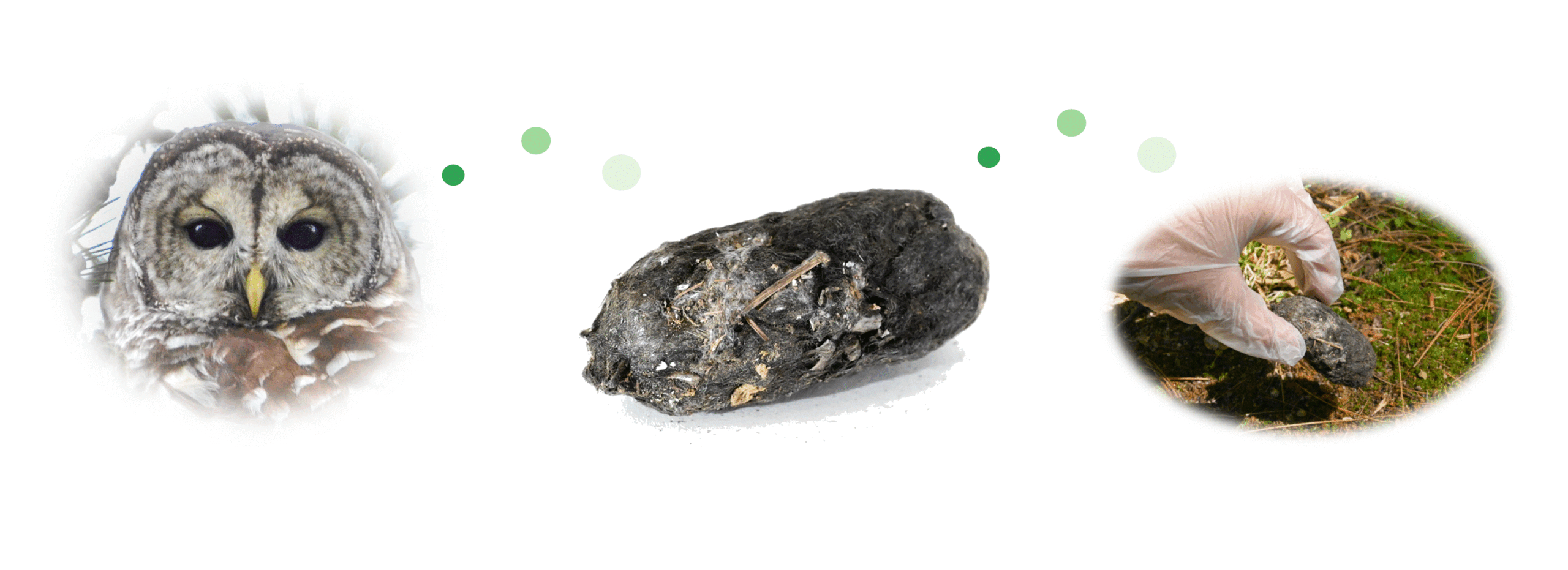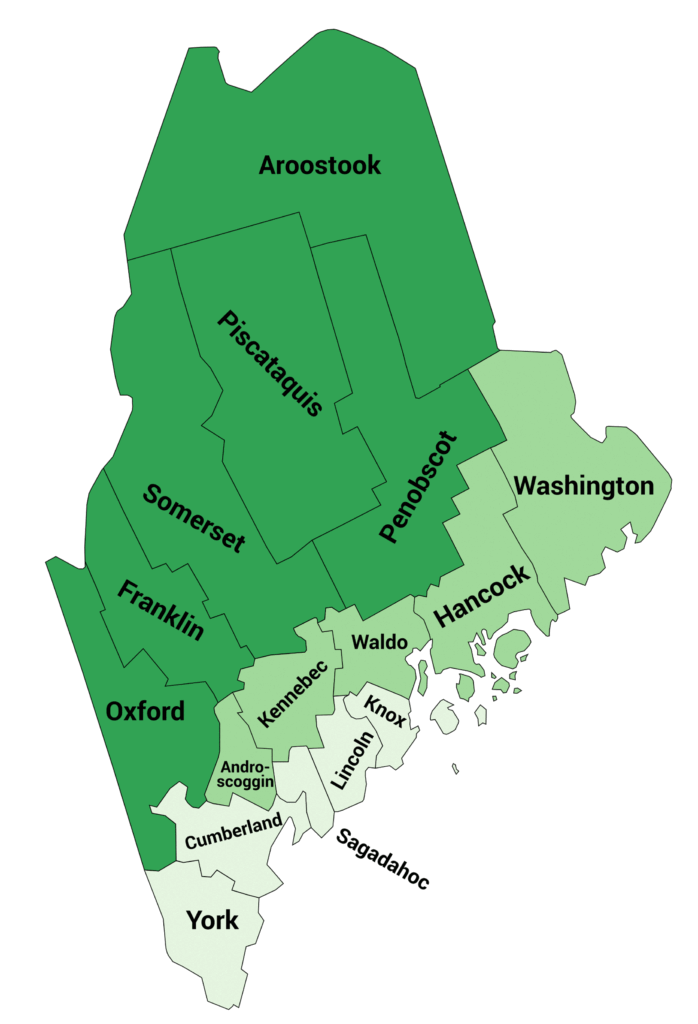
Project summary
The Maine Owl Pellet Project (MOPP) is a collaboration between the University of New England, the Maine Department of Inland Fisheries and Wildlife, and the United States Fish and Wildlife Service that aims to engage the public and promote crowdsourced science to better understand the diet of Maine’s owls and the distribution and composition of the small mammal community on which they prey, including the threatened northern bog lemming, to inform conservation efforts.

Owls, prey, and pellets, oh my!
Owls eat a variety of animals and then regurgitate course matter (like hair, bones, and feathers) in the form of pellets. These pellets can be found on the ground, often near an owl roost. Owl roosts are places where these secretive predators return regularly to rest or sleep.

We will use owl pellets to learn more about 1) the diet of owls, and 2) owl prey because the pellets contain prey parts we can identify. By identifying prey parts, we hope to discover new locations where the rare northern bog lemming is found in Maine. But, the Maine Owl Pellet Project needs your help to connect us with pellets!
How can I help?
If you live, work, or adventure in Maine and find an owl pellet, please consider collecting and sending the pellet to us for analysis. Directions can be found here: Find, collect, and send pellets!
Pellets from northern Maine counties (dark green) are of greatest interest, based on potential northern bog lemming distribution, though we welcome submissions from across the state (lighter greens).



